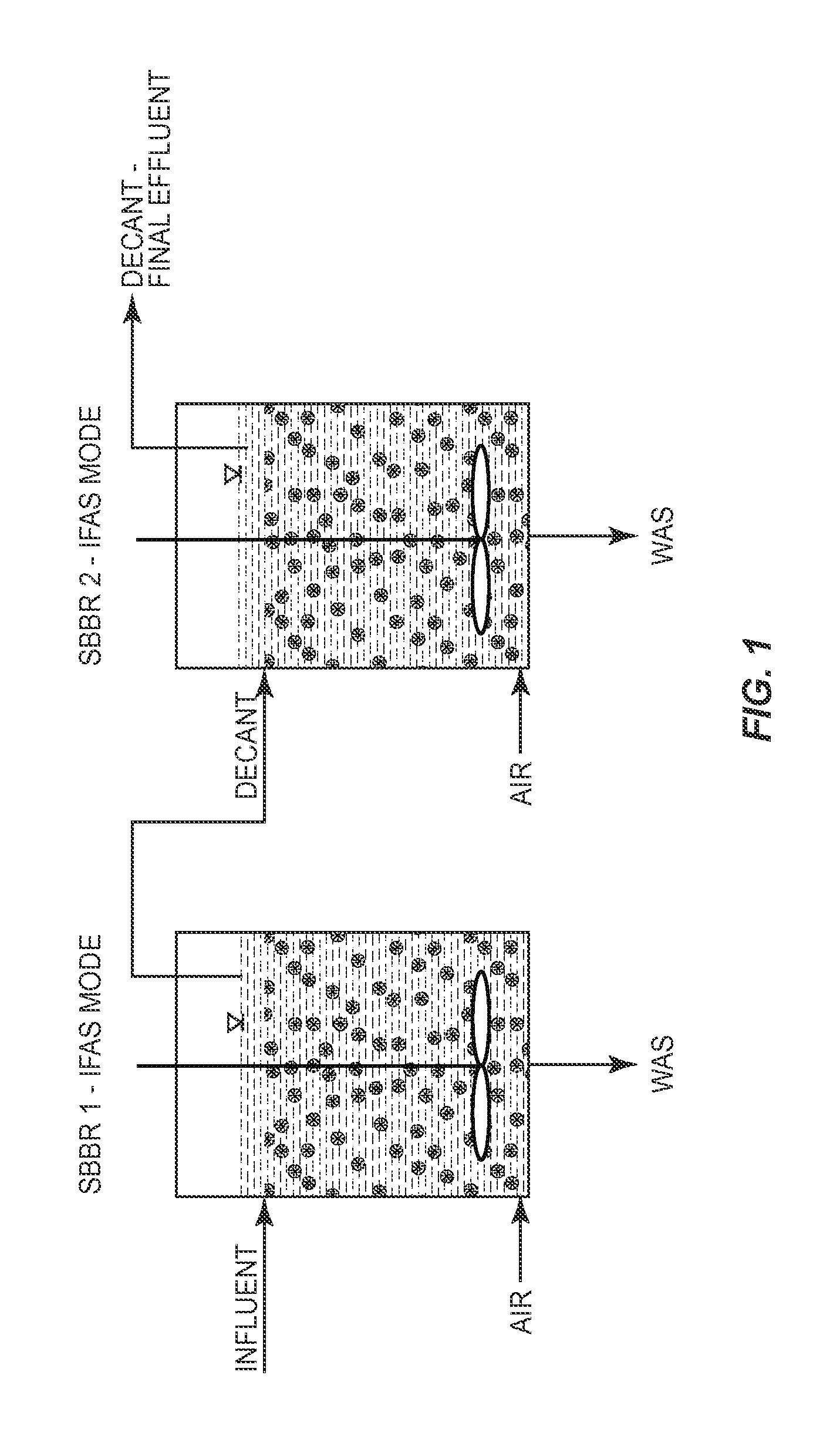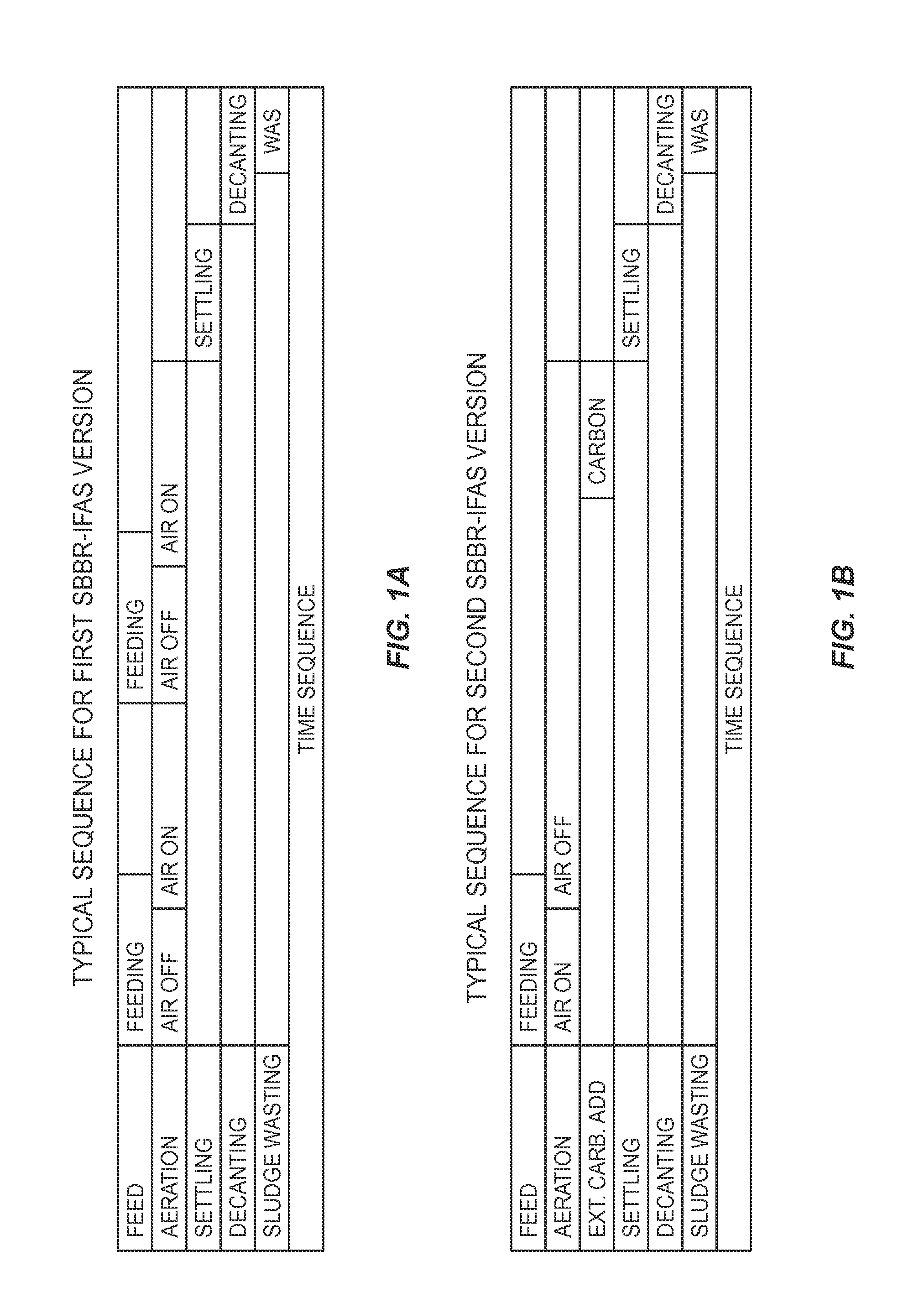Process for Treating Municiple Wastewater Employing Two Sequencing Biofilm Batch Reactors
a biofilm batch reactor and wastewater treatment technology, applied in biological water/sewage treatment, sustainable biological treatment, water/sludge/sewage treatment, etc., can solve the problems of increasing the cost of nitrification and denitrification, and addressing the ammonium concentration. , to achieve the effect of reducing the ammonium concentration, low cost and low cos
- Summary
- Abstract
- Description
- Claims
- Application Information
AI Technical Summary
Benefits of technology
Problems solved by technology
Method used
Image
Examples
Embodiment Construction
[0019]The system and process described herein entails a two stage sequence batch biofilm (SBBR) reactor for removing BOD and ammonium. The first SBBR reactor receives wastewater, typically municipal wastewater, and functions to pretreat the wastewater such that when it is transferred to the second SBBR reactor it is conditioned such that anaerobic ammonium oxidation (anammox) bacteria is effective to remove ammonium and nitrite from the wastewater. There are two basic processes involved. In the first SBBR reactor, the aim is to conduct partial nitritation. This process entails utilizing ammonium oxidizing bacteria (AOB) in the first SBBR to perform nitritation which converts a substantial portion of the ammonium to nitrite. Once nitritation has been performed in the first SBBR, the wastewaters transfer to the second SBBR where a different species of bacteria is utilized to oxidize the ammonium and nitrite. The second species of bacteria utilized in the second SBBR reactor is anammox...
PUM
| Property | Measurement | Unit |
|---|---|---|
| concentration | aaaaa | aaaaa |
| temperature | aaaaa | aaaaa |
| concentration | aaaaa | aaaaa |
Abstract
Description
Claims
Application Information
 Login to View More
Login to View More - R&D
- Intellectual Property
- Life Sciences
- Materials
- Tech Scout
- Unparalleled Data Quality
- Higher Quality Content
- 60% Fewer Hallucinations
Browse by: Latest US Patents, China's latest patents, Technical Efficacy Thesaurus, Application Domain, Technology Topic, Popular Technical Reports.
© 2025 PatSnap. All rights reserved.Legal|Privacy policy|Modern Slavery Act Transparency Statement|Sitemap|About US| Contact US: help@patsnap.com



